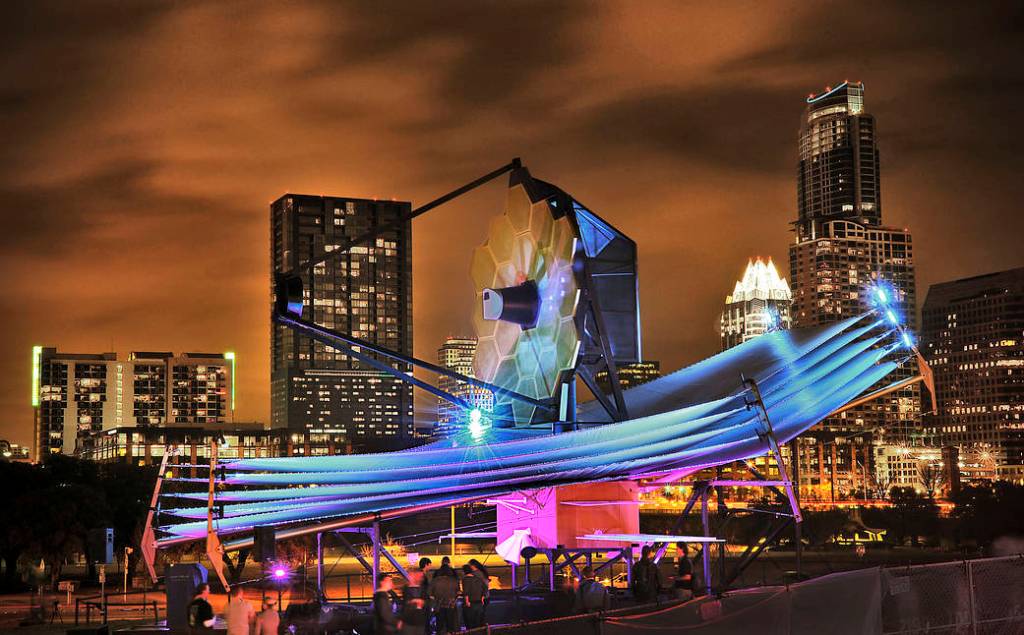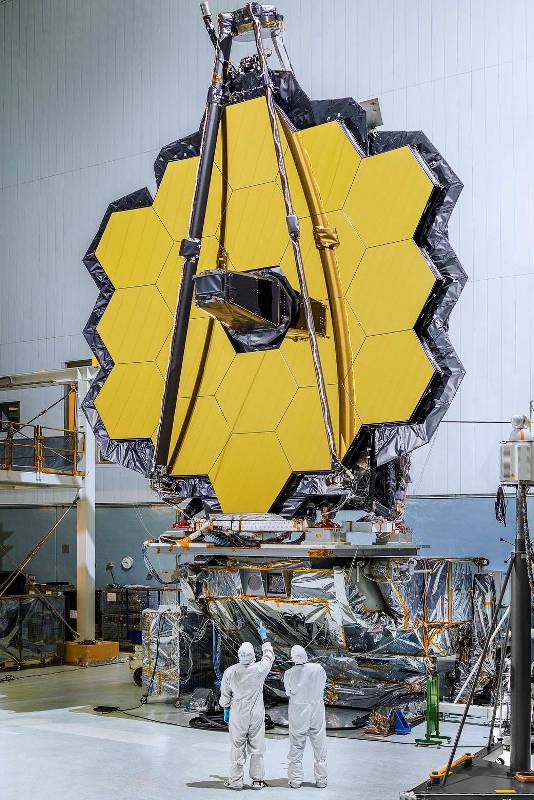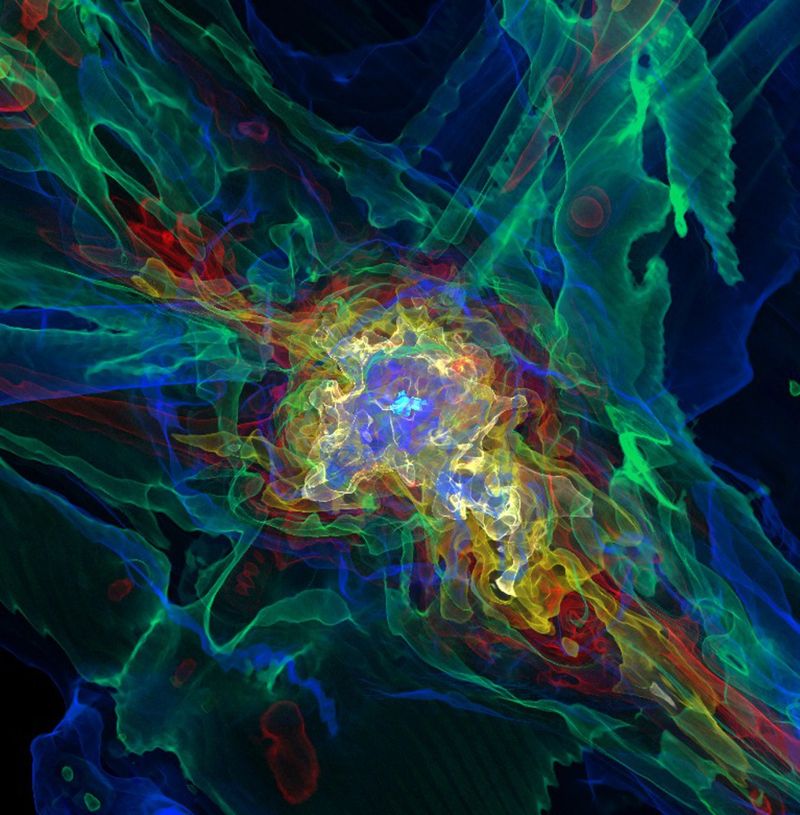File:The James Webb telescope modeled at SXSW 2015.jpg: Difference between revisions
Siterunner (talk | contribs) No edit summary |
Siterunner (talk | contribs) No edit summary |
||
| (6 intermediate revisions by the same user not shown) | |||
| Line 1: | Line 1: | ||
[[File:The James Webb telescope modeled at SXSW-2.jpg]] | |||
<h2>Thank you Hubble, Next up is James Webb!</h2> | <h2>Thank you Hubble, Next up is James Webb!</h2> | ||
File:Galaxy clusters.jpg | '''''February 2017''''' | ||
<big>'''''Hello [https://www.nasa.gov/press-release/nasa-telescope-reveals-largest-batch-of-earth-size-habitable-zone-planets-around TRAPPIST-1]'''''</big> | |||
''The Hubble Space Telescope characterized the atmospheres of TRAPPIST-1B and TRAPPIST-1C, finding that the two worlds probably aren't encircled by hydrogen and helium rich atmospheres, meaning their atmospheres could resemble our own.'' | |||
''Researchers will be able to get an even better look at these worlds in the future.'' | |||
''NASA's [http://www.space.com/34599-james-webb-space-telescope-facts-you-need-to-know-video.html James Webb Space Telescope (JWST)] — Hubble's telescope successor expected to launch in 2018 — should be able to peer deeply into the atmospheres of alien planets to try to see if they really could be like our own.'' | |||
''The James Webb Space Telescope might be able to pick out oxygen, carbon dioxide, methane and other molecules in exoplanet atmospheres to find any [https://en.wikipedia.org/wiki/Biosignature biosignatures] that might be present.'' | |||
... #TheBigPicture | |||
... #PlanetCitizen | |||
[[File:Webb Telescope construction completed-Nov2016.jpg]] | |||
[[File:Galaxy clusters.jpg]] | |||
[[Category:Green Graphics]] | [[Category:Green Graphics]] | ||
[[Category:NASA]] | |||
[[Category:Planetary Science]] | [[Category:Planetary Science]] | ||
[[Category:Space Science and Space Physics]] | [[Category:Space Science and Space Physics]] | ||
Latest revision as of 13:08, 24 February 2017
Thank you Hubble, Next up is James Webb!
February 2017
Hello TRAPPIST-1
The Hubble Space Telescope characterized the atmospheres of TRAPPIST-1B and TRAPPIST-1C, finding that the two worlds probably aren't encircled by hydrogen and helium rich atmospheres, meaning their atmospheres could resemble our own.
Researchers will be able to get an even better look at these worlds in the future.
NASA's James Webb Space Telescope (JWST) — Hubble's telescope successor expected to launch in 2018 — should be able to peer deeply into the atmospheres of alien planets to try to see if they really could be like our own.
The James Webb Space Telescope might be able to pick out oxygen, carbon dioxide, methane and other molecules in exoplanet atmospheres to find any biosignatures that might be present.
... #TheBigPicture
... #PlanetCitizen
File history
Click on a date/time to view the file as it appeared at that time.
| Date/Time | Thumbnail | Dimensions | User | Comment | |
|---|---|---|---|---|---|
| current | 21:41, 11 April 2015 |  | 500 × 305 (91 KB) | Siterunner (talk | contribs) | Category:Green Graphics Category:Space |
You cannot overwrite this file.
File usage
The following 4 pages use this file:


